Six (!) Seoul Palaces
Seoul is home to six different royal palaces, each built by or for a different king. Beautifully crafted and opulent, some are more intact and authentic than others.
Authentic?
The five older ones all include at least one tale of complete or partial destruction. All were burnt to the ground during the Japanese Invasion in the last decade of the 1500’s. Most were rebuilt in the 1600’s, so their age is usually given as somewhere around 400 years old. Some suffered fire damage over the next 300 years or so. All were destroyed or damaged to at least some extent by the Japanese during their occupation starting from 1910.
For this reason, it’s hard to discern how much of any of these palaces are what we might call “authentic” or “original.” Nevertheless, the restoration they’ve gone through is extremely well-done, using traditional methods of building and decorating.
Changdeokgung Palace
A UNESCO World Heritage Site, Changdeokgung Palace is the prettiest of the palaces, in my opinion, because of the positioning of the buildings on hills in the woods, instead of in a big, flat, open place like Gyeongbokgung Palace (more on that one later). It’s also more highly decorated.
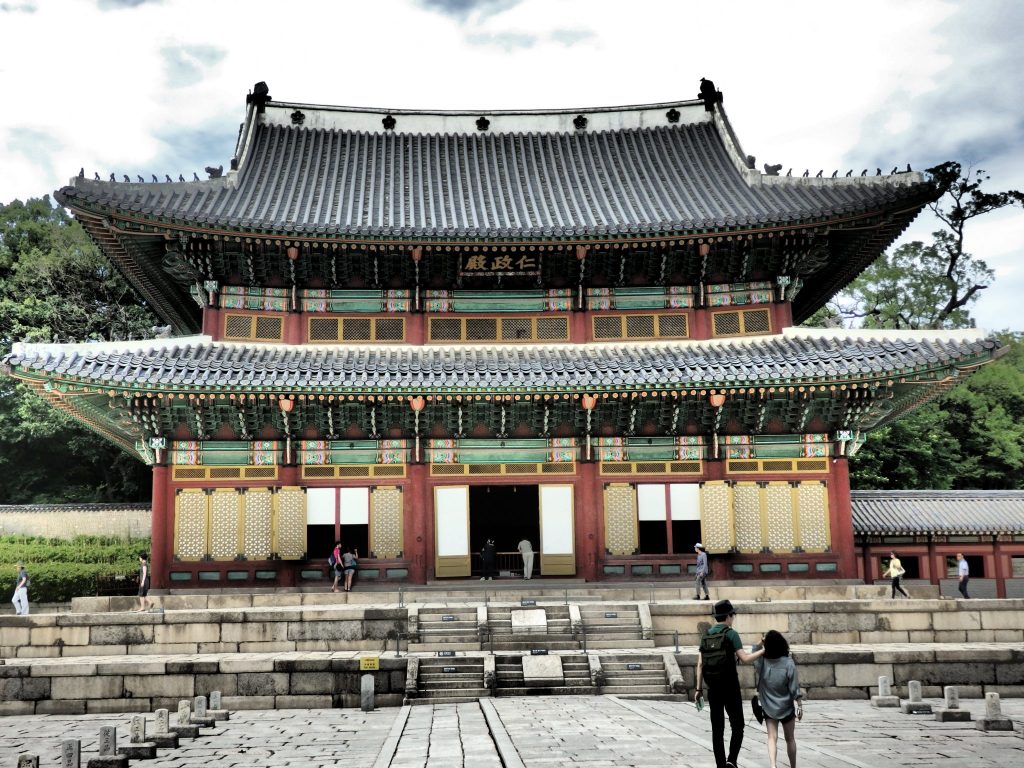
On top of that, this palace is the one that can most honestly be called “restored” rather than “rebuilt.” First built in 1405, destroyed in the Japanese invasion in the late 1500’s, it was rebuilt in 1610 and served as the main palace into the 1880’s. Much of it was destroyed by fire in 1917, but original (1600’s) buildings were moved here from Gyeongbokgung Palace, and the rest were restored.
Made up of a large collection of buildings, there’s a lot to see here: highly-decorated gateways and reception rooms; somewhat simpler housing for male royals, female royals, servants and other functionaries; storehouses; kitchens; pavilions. The list goes on. The paintwork and other details are stunning.
Changdeokgung has a massive garden behind it, now called the Secret Garden because it was off-limits to anyone but the royals. Much is left more or less natural, with paths winding through it. That doesn’t mean it’s a wild forest: small buildings, neatly symbolic ponds with pavilions, and simple houses, meant for contemplation and relaxation or other outdoor activities, are scattered around the garden.
The king did some gardening, planting rice himself, supposedly to set an example to his subjects. His wife raised silkworks using the mulberry trees here. (All very Marie Antoinette, who played at being a peasant in a small “hamlet” on the grounds of Versailles.)
Tours through the Secret Garden are required, except on Saturdays. This can be positive or negative. On a tour, you have to follow along, but on the other hand, fewer people overall obstruct your views. The tour, though, is very carefully timed; the guide will inform you of exactly how many minutes you have at each stop in the tour, and exactly how many minutes it will take to walk to the next one. If she says the tour will take 50 minutes, it will take 50 minutes.
Your other option is to visit on Saturday, which will give you the freedom to wander the paths on your own. Most likely, though, you’ll be sharing the garden with far more people.
Changyeonggung Palace
Changyeonggung is in the same large park as Changdeokgung. It was originally the primary palace, but after the palaces were all destroyed in the Japanese invasion in 1592, Changdeokgung was rebuilt first and became the primary palace.
While Changdeokgung is the prettier of the two because of the setting, Gyeongbokgung is also worth a visit. The paintwork and detailing on the various buildings is just as breathtaking.
Gyeongbokgung Palace
Gyeongbokgung Palace has the most impressive entry gate, inner gate and ceremonial hall of all of the castles, just considering sheer size. The traditional changing of the guard ceremony in the outer courtyard is also fun to watch. Of the palaces, this is the one that is laid out most formally, with large courtyards surrounded by walls and gates into further inner courtyards. Again, it is all ornately painted.
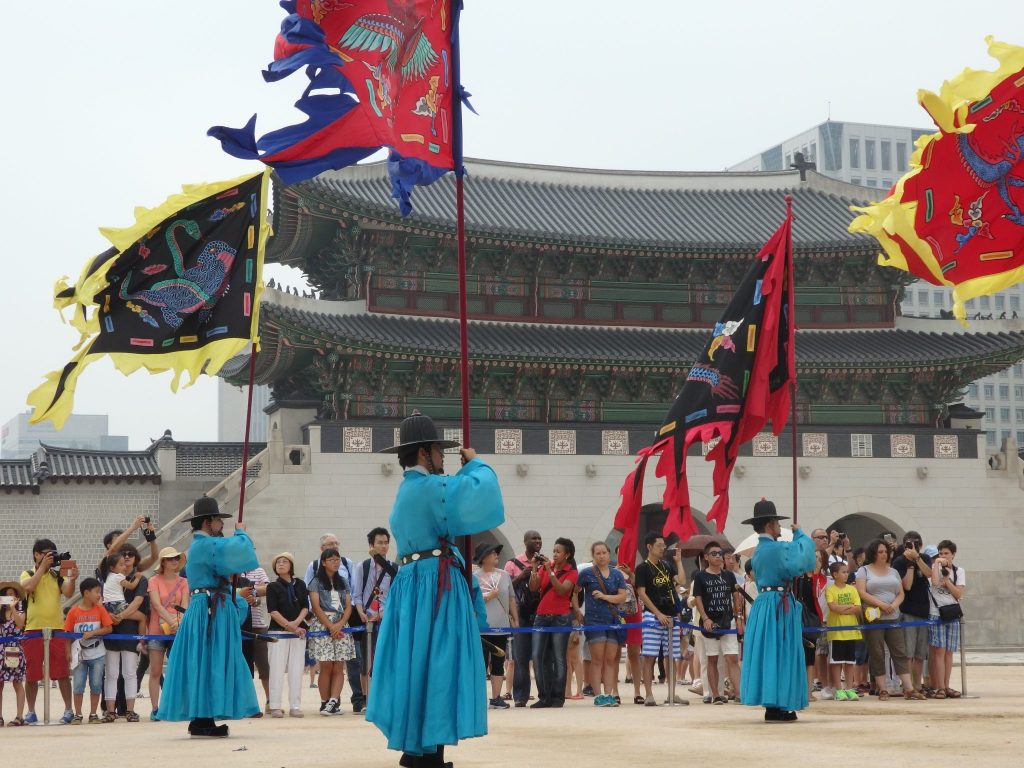
This palace was also destroyed in the Japanese invasion in 1592-98, but not rebuilt until 1867. Torn down again during the Japanese occupation that started in 1910, it was only fully rebuilt in the 1990’s.
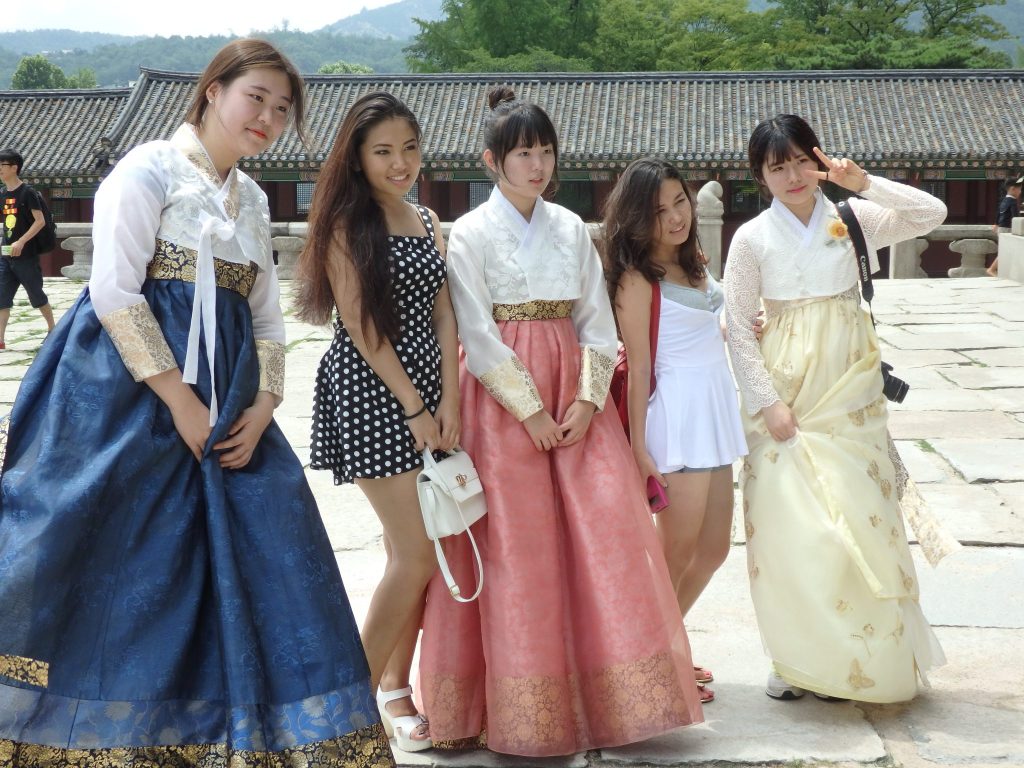
The National Palace Museum, right inside the entrance to Gyeongbokgung Palace, is worth a visit, containing artifacts illustrating the history of the 500-year-long Josean Dynasty and the short-lived Korean Empire. The items, which all come from the royal household, are beautiful in terms of craftsmanship: ceremonial costumes, artwork, porcelain and many other lovely objects. The museum itself is elegantly laid out, quiet, roomy, well-lit and not overdone.
Also within the grounds of Gyeongbokgung is the National Folk Museum. In more or less the same style as the National Palace Museum, this one is about common people and culture rather than royalty. It contains lots of interesting artifacts used by government functionaries or peasants. Exhibits on the history of the Korean people and aspects of Korean culture could keep you busy for hours on a rainy day.
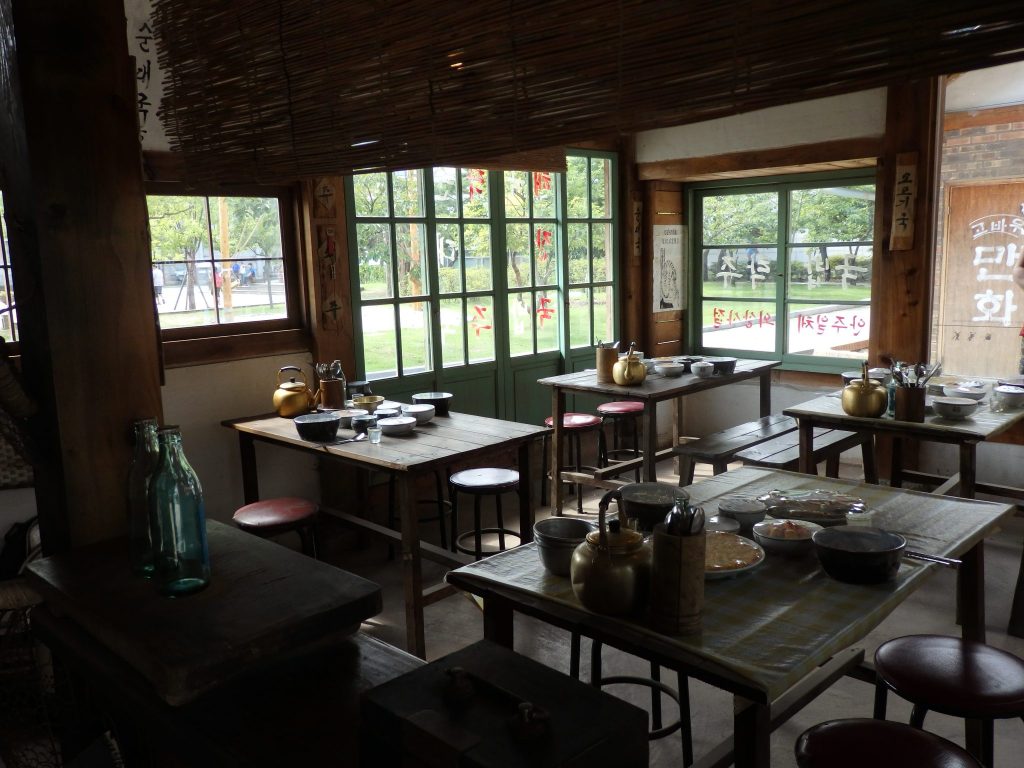
Outside, one original traditional home and a cluster of reconstructed buildings—a café, a barber shop, a water mill, a comics shop, and so on—illustrate Korean life in the mid-20th century. There’s also a separate children’s museum, though I don’t know how much of that would be available in English.
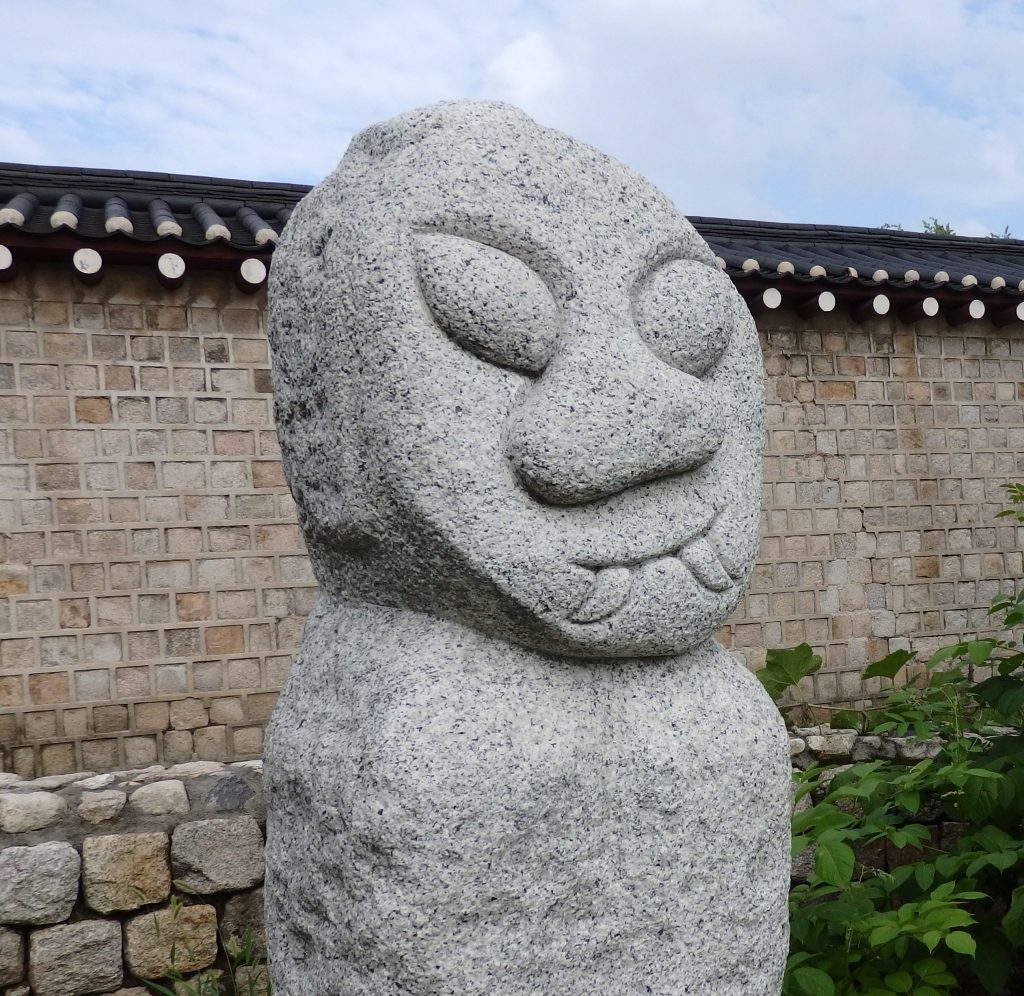
Deoksugung Palace
I also visited Deoksugung Palace, a much smaller affair right next to city hall in the center of the city. It used to be bigger, and what is left is only a few buildings: a couple of gateways, one residential building and a few other small structures. I was able to see the whole thing by visiting the Jeong-Dong Observatory (really just a coffee shop with big windows) in the Seosomun Building right next door to the palace.
What’s different about this palace, though, is that it was occupied by a later king, who decided to modernize—in other words, Westernize—his palace. Now used as an art museum, you can see his neo-classical palace on the left in the picture above, complete with Ionic and Corinthian columns, presenting quite a contrast to the traditional Korean buildings next door.
I didn’t, however, stay long at Deoksugung Palace. In an open space next to the very modern glass city hall, a K-Pop concert was being set up. This was a couple of blocks away, but the volume at which they blasted that K-Pop was headache-provoking. Combined with that, the park around Deoksugung Palace is full of cicadas who emit a constant, loud buzzing sound. Usually, I can handle that, but the cicadas seemed to turn up the volume whenever the K-Pop started. It felt like a drill into the side of my head.
Trying to move further from the K-Pop, I didn’t find anywhere quieter within the palace grounds. At another one of the traditional buildings, a tour guide was explaining something or other to a group of tourists. In order to be heard above the K-Pop and the cicadas, she was shouting into a portable microphone. This video clip doesn’t do justice to the noise, since the bass line of earlier songs was more intrusive, but it’ll give you an idea of what it was like:
It was painful to hear, and I left quickly.
Gyeonghuigung Palace
I decided I might as well check out the one remaining palace I hadn’t seen, walking distance from Deoksugung: Gyonghuigung Palace. This one is the smallest and by far the quietest of all the palaces, with only two or three other small family groups exploring it when I was there. It’s also the least interesting, comprising just one compound with walls, a gate, a reception room, and one living building behind. Like the others, it was built in 1617-1623, destroyed after Japan’s occupation of Korea in 1910, then rebuilt recently. It’s also somewhat less ornately decorated than the others.

Nevertheless, being there, hearing only the cicadas (not as loud) and the distant roar of the city, was a relief after the cacophony of Deoksugung. It would probably be the best of them for a picnic, for example, without a lot of people around.
Unhyeonggung Palace
There’s actually one more palace that isn’t even mentioned in the tourist material about Seoul: Unhyeonggung Palace. I only noticed it because I happened to walk by it on my way to Changyeonggung.
Like Gyonghuigung, this palace compound is quite small. What’s different about it is that it was built later, mostly in the 19th century, but follows the traditional design. It’s much more modest, though, and only very simply painted. It’s also completely empty of tourists. I think I was literally the only person there that morning.
What Unhyeonggung Palace does well is illustrate how the royals lived in a palace like this. Quite a few of the rooms are furnished with floor mats, cushions on the floor, low tables, cupboards, wall screens, and other decorative or practical items. Mannequins model how particular events might have looked, such as a party held for the king’s mother.
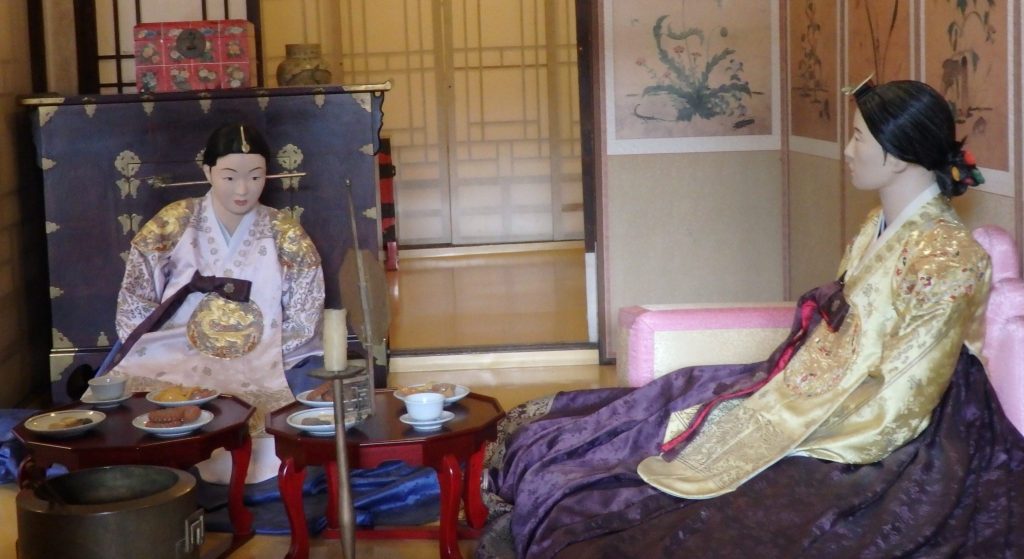
Jongmyo Confucian Shrine
A UNESCO World Heritage site, Jongmyo Confucian Shrine isn’t actually a palace, but it is royal and seems to me appropriate to include in a discussion of all the palaces. You could say that Jongmyo is the palace for deceased royalty.
When a king of the Joseon Dynasty died, it was believed that his soul left his body and resided in a memorial tablet, a hollow block of wood. Jongmyo, then, is essentially a storage place for the tablets. They are housed in a couple of long halls, only opened once a year for a worship ceremony, though during the Josean Dynasty the rituals would have happened more often.
A path runs in Jongmyo from the entrance gate to the halls. The middle part of that path is reserved for spirits, so visitors have to walk other routes. In any case, the surroundings are pretty, though not nearly on the same scale as the Secret Garden of Changdeokgung or the huge open areas of Changyeonggung.
Interestingly, later kings would judge their deceased ancestors to decide whether they had any “achievements.” The ones who had excelled in some way were judged as worthy of housing their tablets in the biggest of the halls, while the others—those who died before accomplishing anything or who just weren’t very good kings—were relegated to a smaller, lesser hall.
As with the Secret Garden, in order to see Jongmyo, you have to take a tour, some of which are offered in English. On Saturdays, though, you can wander at will.
My Recommendations
I only ended up visiting all of the palaces because I had to stay in Seoul for some medical treatment. If you don’t have time to see them all, I’d recommend Changdeokgung as the prettiest palace to visit, along with its Secret Garden. Changyeonggung would be my next choice, for the palace, of course, but also for the two quality museums on its grounds.



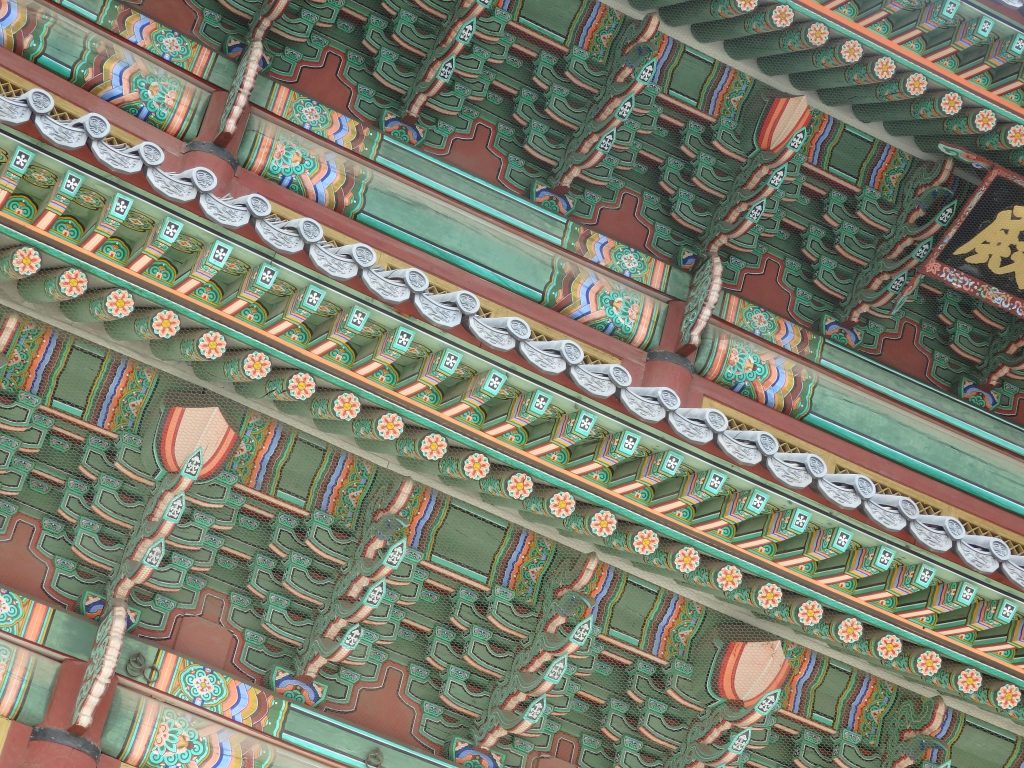

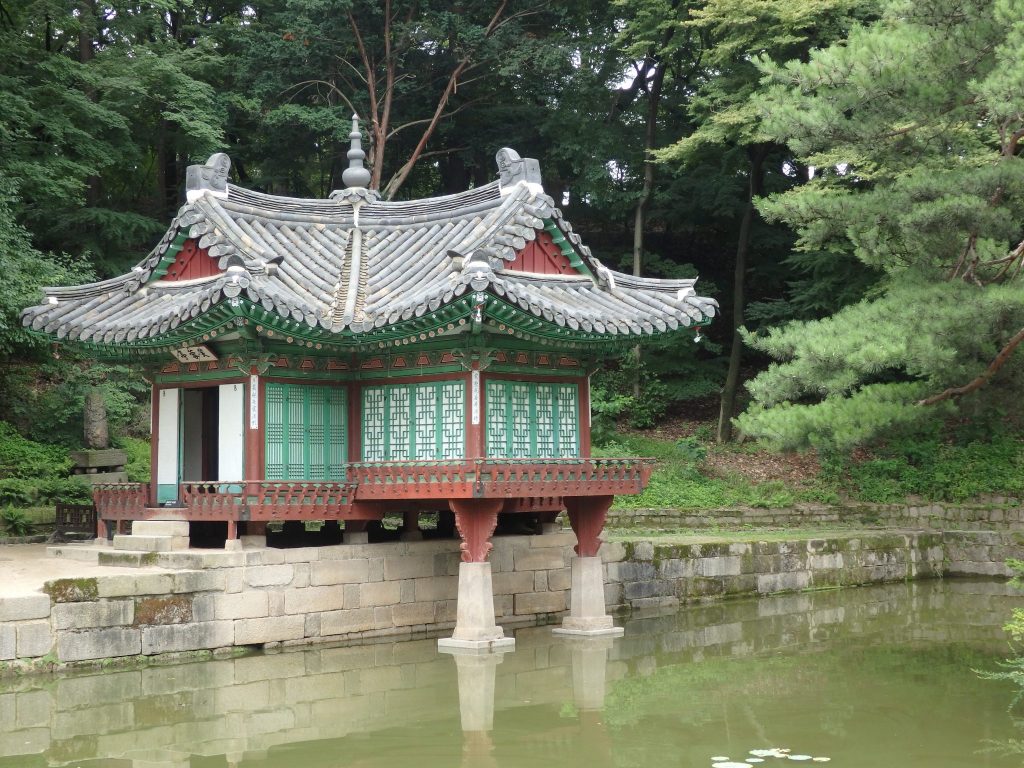
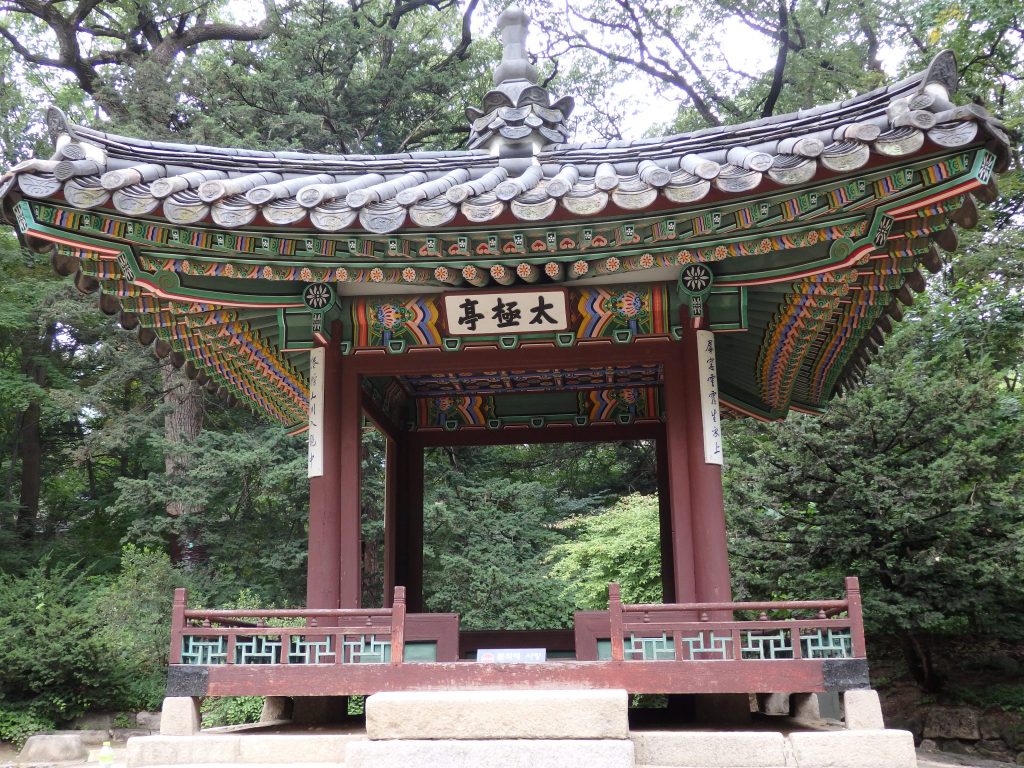
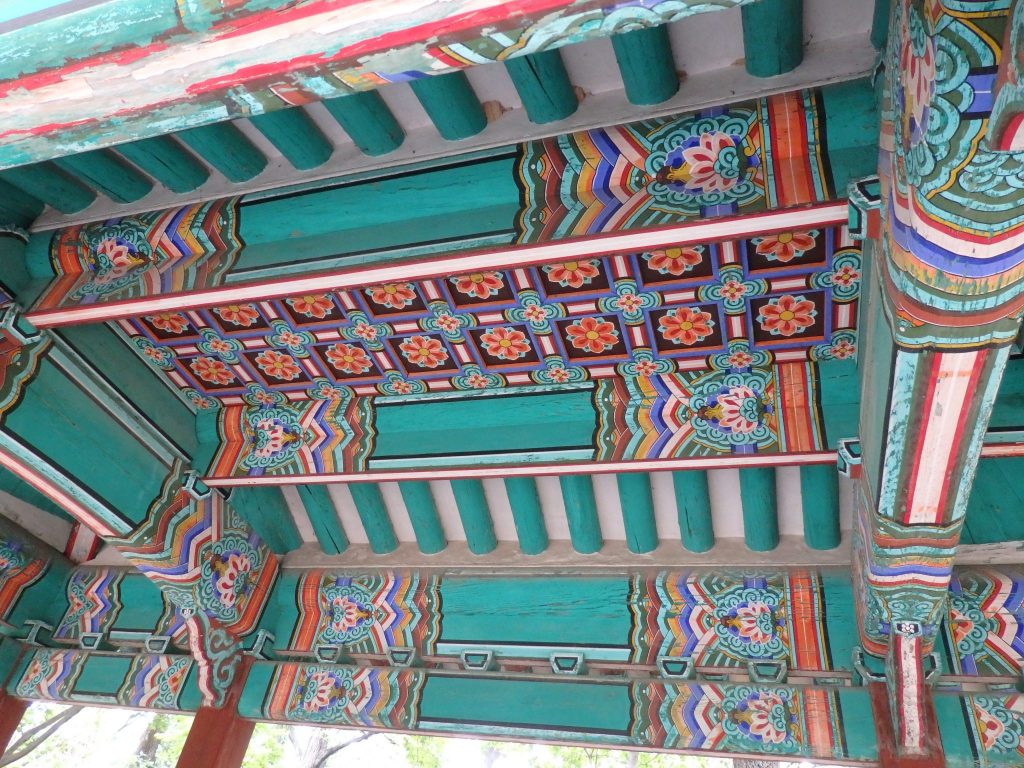
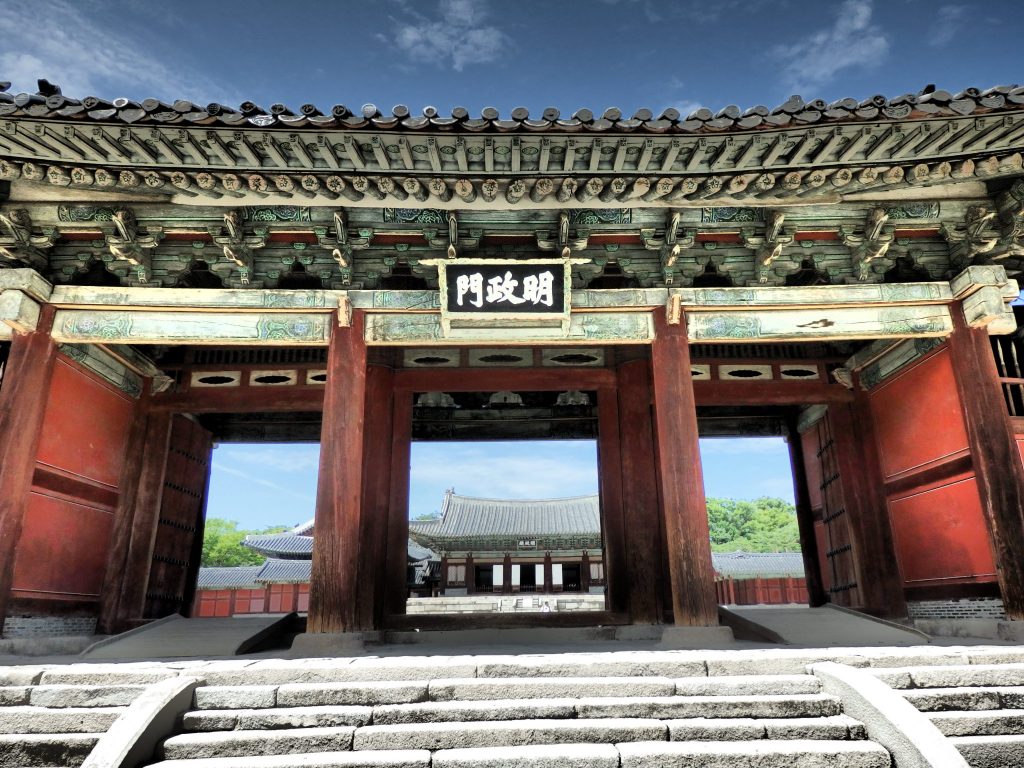
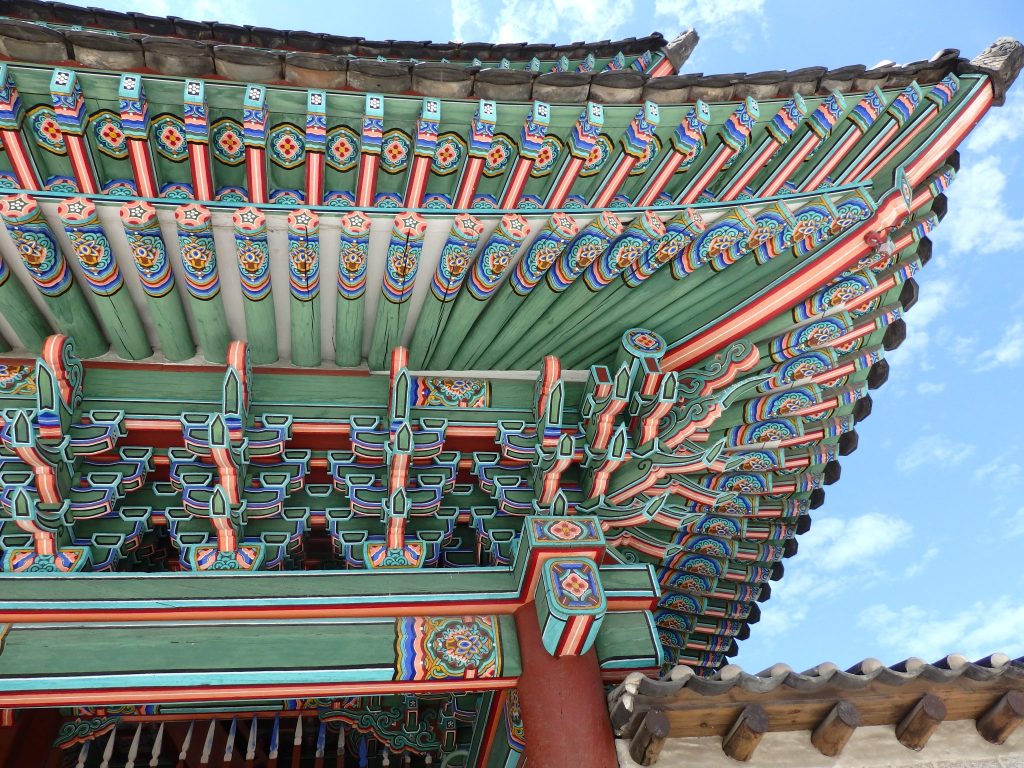
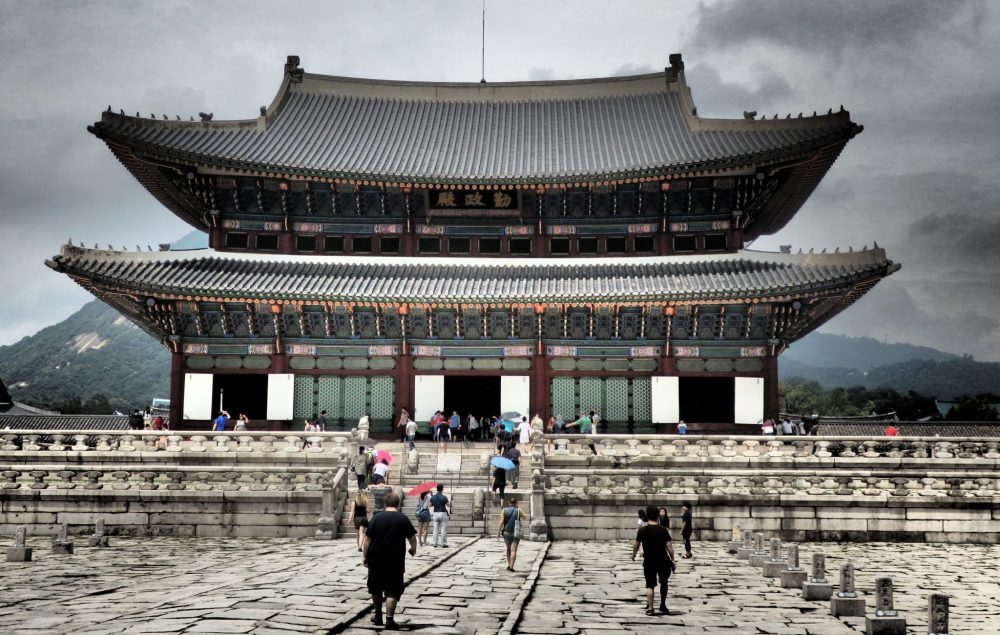
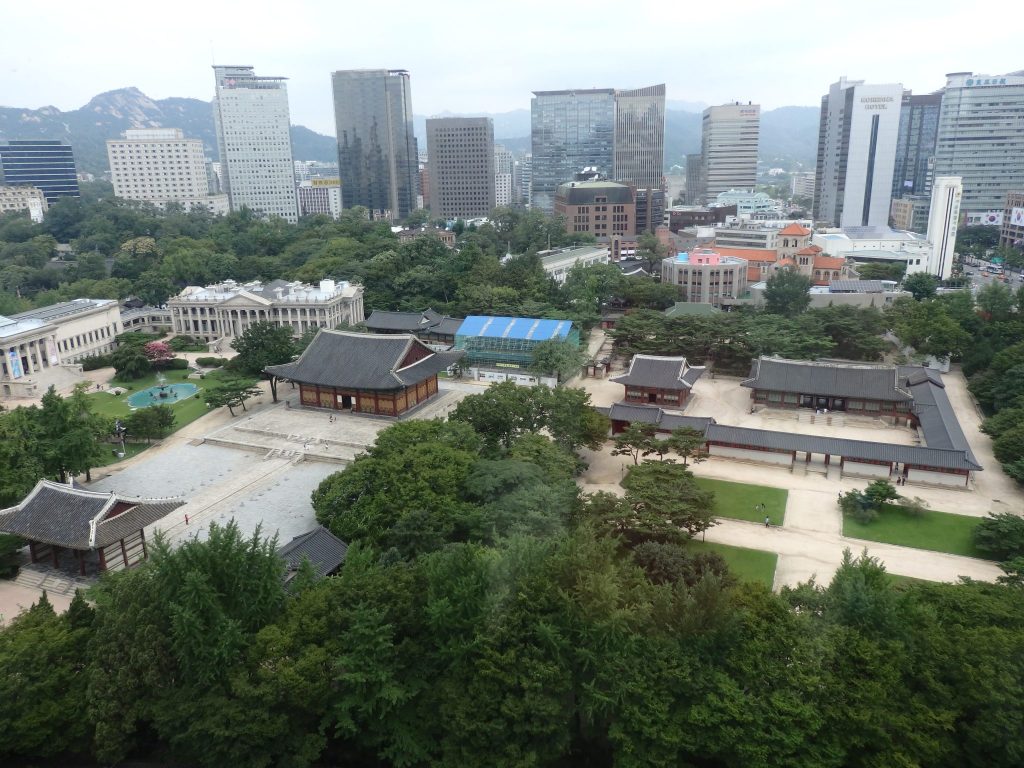
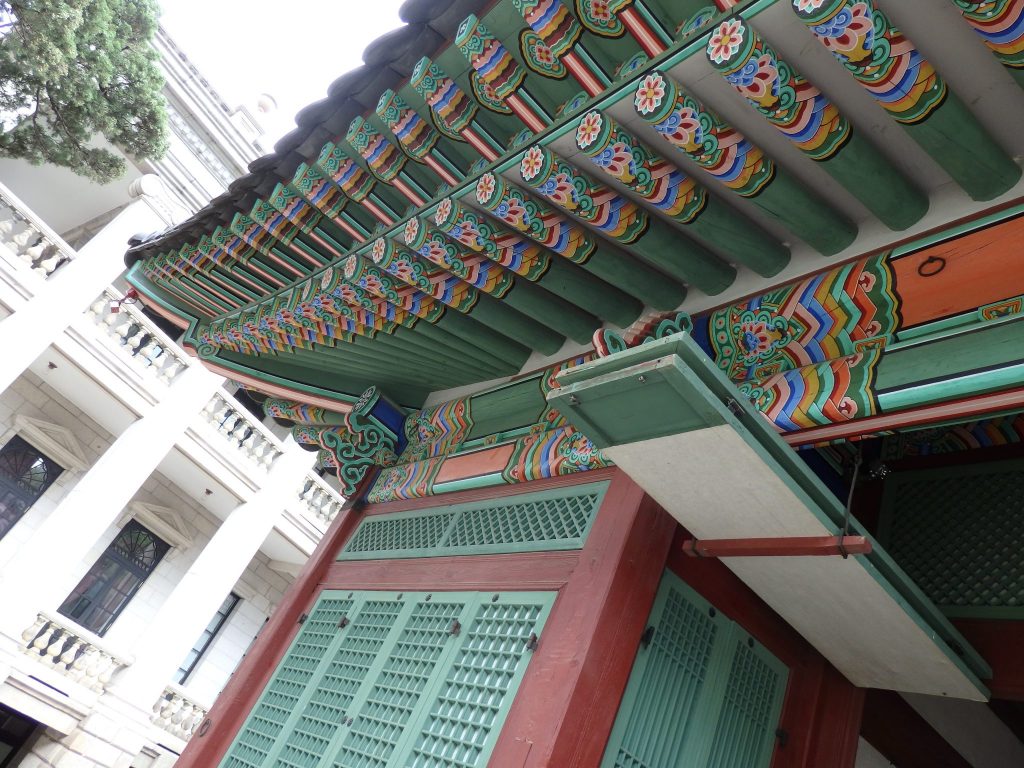

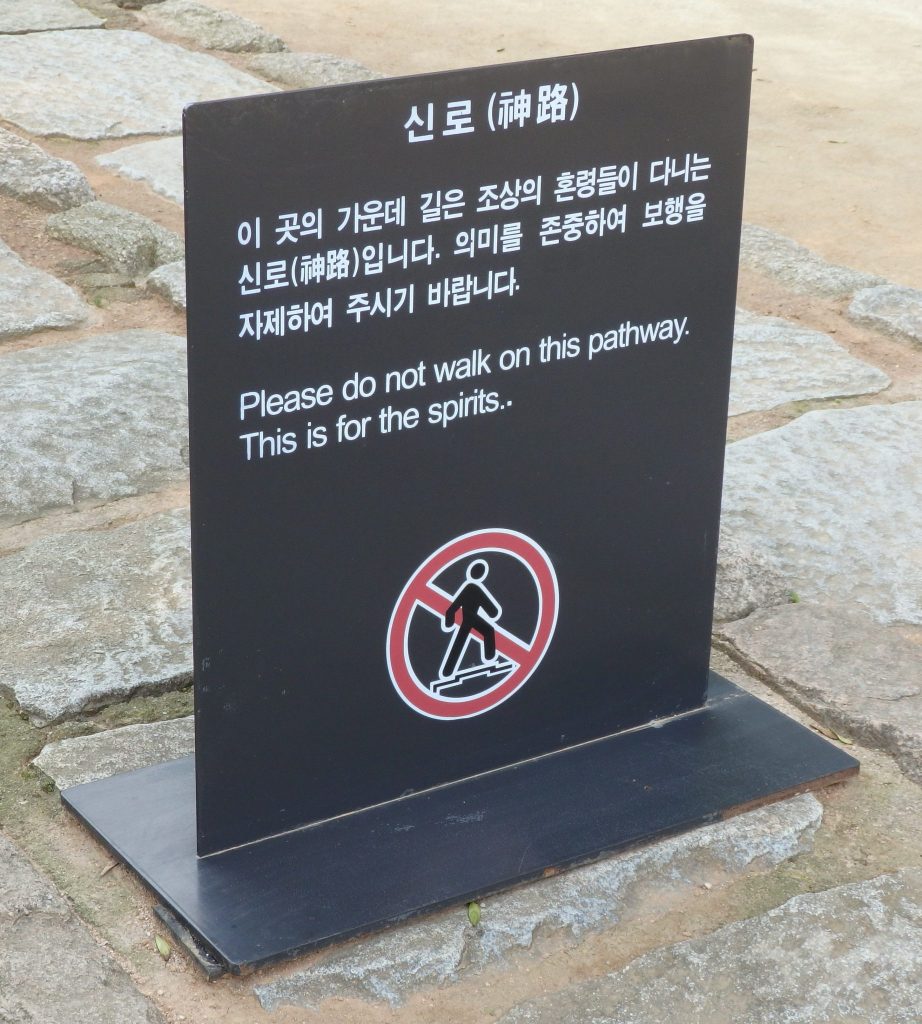

So a good thing came out of your medical emergency – you got to see all 6 palaces! they look really cool. I would love to see South Korea one day.
Yes, as medical issues go, this one didn’t cramp my style very much. Once I had the right pills so it didn’t hurt anymore I felt fine to just go on with sightseeing as usual. I stayed in Seoul because I didn’t know yet if I’d need to fly home for further care, or if the pain would return. I had planned to visit other parts of the country but instead got to explore Seoul much more deeply, which was really enjoyable!
I would like to visit the the first three palaces. They look amazing. It is sad to know that they were damaged during the occupation but at least we have something to appreciate(and marvel at) nowadays.
Yes, and as far as I can tell the reconstructions used the original techniques and materials so the palaces are authentic, if not ancient.
Fire is a problem with these beautiful timber structures. It is the same in Japan. The craftsmanship is simply mind boggling. I’m glad you were able to get around to all the temples whilst recuperating. If I make it over there, I’ll know which to see first. 🙂
By all means, go! Seoul is a fascinating place! I was there for two weeks and still didn’t get to see everything!
I was there for two years. South Korea is beautiful.
Beautiful place…
Yes, it is! And I enjoyed thoroughly my exploration of Seoul!
Hi Rachel. All my years in Korea and I have not made it to the six! I do plan on changing that soon. I think I’ve been to four of the six. I’ve always wanted to go to Changdeokgung, particularly to see the Secret Garden. Thanks for the tip for Saturday visiting. I’m in Seoul for Chuseok, when a lot of Koreans leave. Next Saturday may be the perfect opportunity.
Thanks so much for cohosting Travel Photo Thursday. #TPThursday
If the weather is good, that would be perfect! Fewer visitors than a normal Saturday, and you could wander at your own pace. Changdeokgung is wonderful, and will take some time to see well.
I love the beautiful detail of these palaces. Your photos are awesome. I have to keep looking back to which was which, because their names look so similar at first. haha I love historic places and would love to see them one day. The path where the spirits walk is also quite interesting to know. Thanks for sharing!
Thanks, Nancie! I have to keep looking back too, or I’ll get them all confused. As a matter of fact, on my first day in Seoul, I meant to go to one palace (Changdeokgung) and ended up at Changyeonggung instead. I didn’t realize till later that I’d ended up on the wrong side of the park! But now that I’ve seen them, even if I can’t remember the names, I have a very clear memory of each one, since there’s something special or different about each. And, yes, the detail is beautiful!
Hi Rachel,
On your recommendations, you mentioned Changgyeonggung palace as your second choice. Isn’t it Gyeongbokgung Palace that has the 2 museums?
The reason why I was paying close attention to this is that I have to choose between visiting Changyeonggung or Deoksugung Palace. I already have the other 2 in my itinerary and have only 1 more palace to fit in.
Which would you recommend on either of the 2-Changyeonggung or Deoksugung ?
Thanks in advance for your input.
Mary A.
I’d skip Deoksugung unless you only have time for a very small palace compound. Yes, Gyeongbokgung is the one with two museums. Changyeonggung is really pretty and right next to Changdeokgung, which is the prettiest of all. Enjoy!